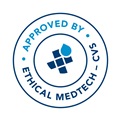
Kathryn Roth
Western University
Canada
Title: Surgical challenges in melanoma of the head & neck: Applications to clinical practice
Biography
Biography: Kathryn Roth
Abstract
This session will provide an examination of the current surgical challenges in melanoma of the head and neck including margin status in cosmetically or functionally sensitive regions and reconstructive options in the head and neck to permit ongoing oncologic surveillance. Controversy regarding the efficacy of sentinel lymph node biopsy (SLNB) continues despite the publication of the final results of the multicenter MSLT-1 trial. SLNB is minimally invasive and numerous large studies establish accuracy in identification of nodal metastases. OTO-HNS has a lower adoption rate of sentinel node biopsy relative to other surgical specialties. Controversy exists regarding the validity, reproducibility and utility of this procedure. Proponents list the value of prognostic information to patients, early completion lymphadenectomy, eligibility for interferon and novel clinical trials. Disadvantages include the false negative rate, complexity of H&N lymphoscintigraphy and risks associated with the procedure and with stage migration. Pitfalls and pearls to improve sensitivity in SLNB particular to the head and neck will be emphasized. Study results from the new, comprehensive melanoma database developed by the Canadian Melanoma Research Network (CMRN) will be highlighted. 171 cutaneous head & neck melanoma cases were analyzed with a mean age of 71.6 years and average length of follow-up 3.6 years. 56% of the patients were male. AJCC Stage I (38%) or II (42%); 93% were M0 and 77% were N0 at time of presentation. Sentinel node biopsy was completed in 22% of T2 and 18% of T3 tumors with a positive nodal rate of 14% and 33% respectively.

